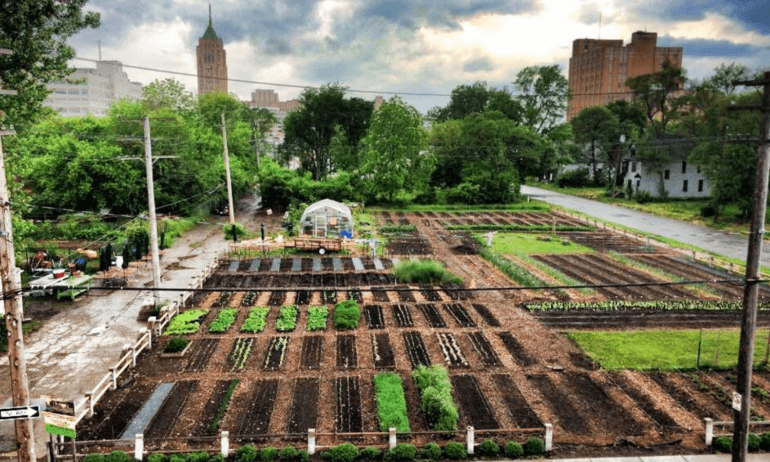The Definitive Guide for City Blooming
Fascinated in growing food available for sale in the City of Chicago? Considering starting an area yard? Modifications to the Chicago Zoning Ordinance allow agricultural uses like neighborhood gardens and metropolitan ranches in numerous parts of the city. Below is a list of often asked questions concerning the rules and guidelines that cultivators ought to think about when intending a city farming task.
The zoning change does not modify any type of other codes taking care of composting, building licenses, purchasing or renting City owned home, organization licenses or environmental contamination. There are existing codes that manage these issues and they stay in full impact and may be relevant to your project. Area gardens are usually owned or handled by public entities, public organizations or community-based companies and preserved by volunteers.
Urban farms grow food that is planned to be offered, either on a not-for-profit or for-profit basis. Due to their business purpose, city ranches require a company certificate.
The Greatest Guide To City Blooming
Composting is enabled yet just for plant material that is generated and used on site. The quantity of garden compost material can not exceed 25 cubic yards at any offered time according to the criteria in 7-28-715 of the City's Municipal Code. Yes. Because the soil at most brand-new yard websites requires amending, garden compost, soil, wood chips, or various other products can be acquired to build or improve the expanding room - home and garden.

If a building license is required after that the hoophouse will be considered an accessory structure. You can figure out even more concerning the building authorization demands by calling the Division of Structures. The 25,000-square-foot dimension limit is meant to prevent a solitary community yard from controling a provided block or interfering with the block's existing property or industrial personality.
The limitation does not put on gardens situated in Public Open Room (POS) districts. Can there be greater than one community yard that is 25,000 square feet on a solitary block? Yes. The size restriction relates to specific gardens, not to private blocks. No. Fencing is not called for, however, yards that have huge vehicle parking locations might be required to mount fence or various other landscaping attributes.
City Blooming Fundamentals Explained
B1 & B2 areas call for that all commercial usage activities be performed inside. Is fence required for city ranches? Fences might be needed, along with landscaping and testing, for particular car park locations and outside job or storage space areas depending on location and the certain activity taking area.
Yes. Urban ranches call for structure licenses and zoning approvals before building and construction. Various other types of city evaluation may be needed relying on specific structures, activities, size, landscaping, licensing, public heath and stormwater management problems. Much of these requirements are identified in the task style or permitting procedure, nevertheless, the applicant might be accountable to independently recognize certain licenses or permits that might be needed.
Yes. The kind of license is determined by what is taking place at the site. The Division of Business Matters and Consumer Security can aid figure out the specific kind of company certificate that's required. Yes. Off street vehicle parking is required for a lot of commercial tasks in Chicago. The needed number of garage is based on the variety of workers servicing site and not the square video of the growing area.
The Single Strategy To Use For City Blooming

A metropolitan farm can sell compost product created on website, nevertheless, the procedure should conform with the policies in 7-28-715 of the Chicago Municipal Code. Aquaponic systems are enabled inside your home on metropolitan ranches in several zoning areas.
Approximately five hives or colonies of honey might be kept as an accessory use. Beekeepers must sign up with the Illinois Division of Agriculture. For even more details regarding the proposed zoning modification you might get in touch with the Department of Real Estate and Economic Growth, Bureau of Planning and Zoning at 312.744.8563.
Farming in cities and metropolitan areas A city ranch in Chicago. Urban agriculture refers to numerous methods of cultivating. https://www.storeboard.com/cityblooming, processing, and distributing food in metropolitan areas. The term also relates to the area activities of pet husbandry, tank farming, beekeeping, and gardening in a metropolitan context. Urban agriculture is distinguished from peri-urban farming, which happens in backwoods beside suburbs.
Our City Blooming Statements
It can involve a movement of natural cultivators, "foodies" and "locavores", who look for to form social networks based on a shared ethos of nature and area holism. These networks can develop using official institutional support, becoming discover here integrated into neighborhood town preparation as a "transition community" activity for sustainable city advancement.
The much more straight accessibility to fresh veggie, fruit, and meat products that might be know with metropolitan farming can improve food safety and security and food safety and security while decreasing food miles, causing lower greenhouse gas exhausts, therefore adding to environment modification mitigation. A few of the very first evidence of city agriculture comes from Mesopotamia.
Comments on “How City Blooming can Save You Time, Stress, and Money.”